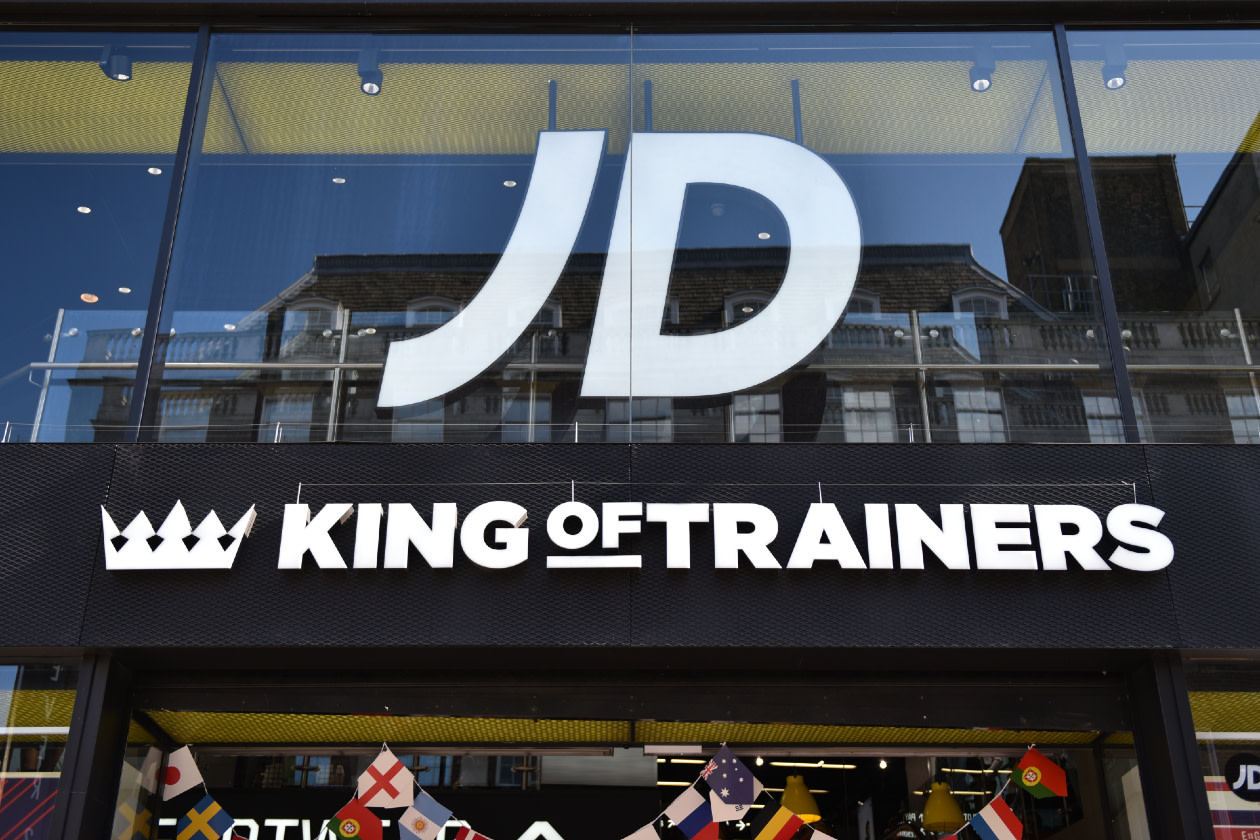JD Sports has announced a proposed acquisition of Hibbett, a North American sports retailer.
The proposed deal will see JD Sports pay $87.50 per share in cash, representing a premium of about 20%. This implies a total purchase price of $1.1bn. The group plans to fund the acquisition and refinance Hibbett's existing debt through its US cash resources of $300mn and a $1bn extension to its existing bank facilities.
The acquisition will increase North America’s share of group sales from around 32% to 40%. The deal is expected to bring annual cost synergies of at least $25mn over the medium term.
The shares rose 5.1% in early trading.
Our view
JD Sports billion dollar deal would see it expand operations in the US, and create a business with combined revenues of £4.7bn. The deal is expected to boost earnings from next year and bring cost synergies over time. Adding over 1,000 stores in a key market for growth certainly looks attractive, and its strong financial position should still leave JD with some net cash on the balance sheet if the deal completes. The focus on acquisitions may leave little room to increase the modest levels of cash returns to shareholders, but we think gearing up for future growth is a good use of capital.
The move comes in the face of increased pressure this year. Weaker outlooks from the likes of Nike and Puma illustrate the struggle across the market, as big brands wait for consumer sentiment to improve. This slow demand has led to an increase of discounting at JD Sports, which in turn has hurt profitability.
Operating in a sensitive corner of the market has meant conditions have been tough, but external factors have been mostly to blame. It still has excellent market share and this has continued to grow. The global sports apparel market is huge – valued at $196bn in 2022 and expected to grow to $272bn by 2030. To service all this demand, JD’s rolled out stores all over the world, with 215 more opened last year.
Filling the racks in these stores are exclusive items from the likes of Nike and Adidas. JD is known for its strong brand relationships and is even Nike’s single largest partner globally. Being able to offer these ‘JD Exclusives’ helps to lure customers into stores and boost market share.
The group’s sales mix by region is better balanced than some of its biggest competitors, which helps smooth out bumps in the road if one market slows. With UK and ROI sales being disappointing in the fourth quarter, this diversity has contributed to keeping growth alive. And because the group sits at the premium end of the market, it typically has healthier margins than its peers too.
But JD Sports faces challenges. Estimates suggest Nike sales contribute to 50-55% of JD’s sales globally, which creates dependency. To gear up for long-term growth, Nike plans to intentionally reduce the supply of older but still popular product lines, in hopes it will stimulate demand for newer releases. This should create some much-needed excitement, but the cost of potential supply reductions to wholesale partners like JD remains to be seen.
The company’s valued at 8.9 times forward earnings, significantly below its long-run average. This reflects the uncertainty surrounding the retail sector in the near term and recent disappointments. But in the long term, we think the extremity of January repricing provides an attractive valuation for a company which has had strong revenue and profit growth prospects although of course no shareholder returns are guaranteed.
JD Sports key facts
All ratios are sourced from Refinitiv, based on previous day’s closing values. Please remember yields are variable and not a reliable indicator of future income. Keep in mind key figures shouldn’t be looked at on their own – it’s important to understand the big picture.
This article is not advice or a recommendation to buy, sell or hold any investment.No view is given on the present or future value or price of any investment, and investors should form their own view on any proposed investment.This article has not been prepared in accordance with legal requirements designed to promote the independence of investment research and is considered a marketing communication.Non - independent research is not subject to FCA rules prohibiting dealing ahead of research, however HL has put controls in place(including dealing restrictions, physical and information barriers) to manage potential conflicts of interest presented by such dealing.Please see our full non - independent research disclosure for more information.


